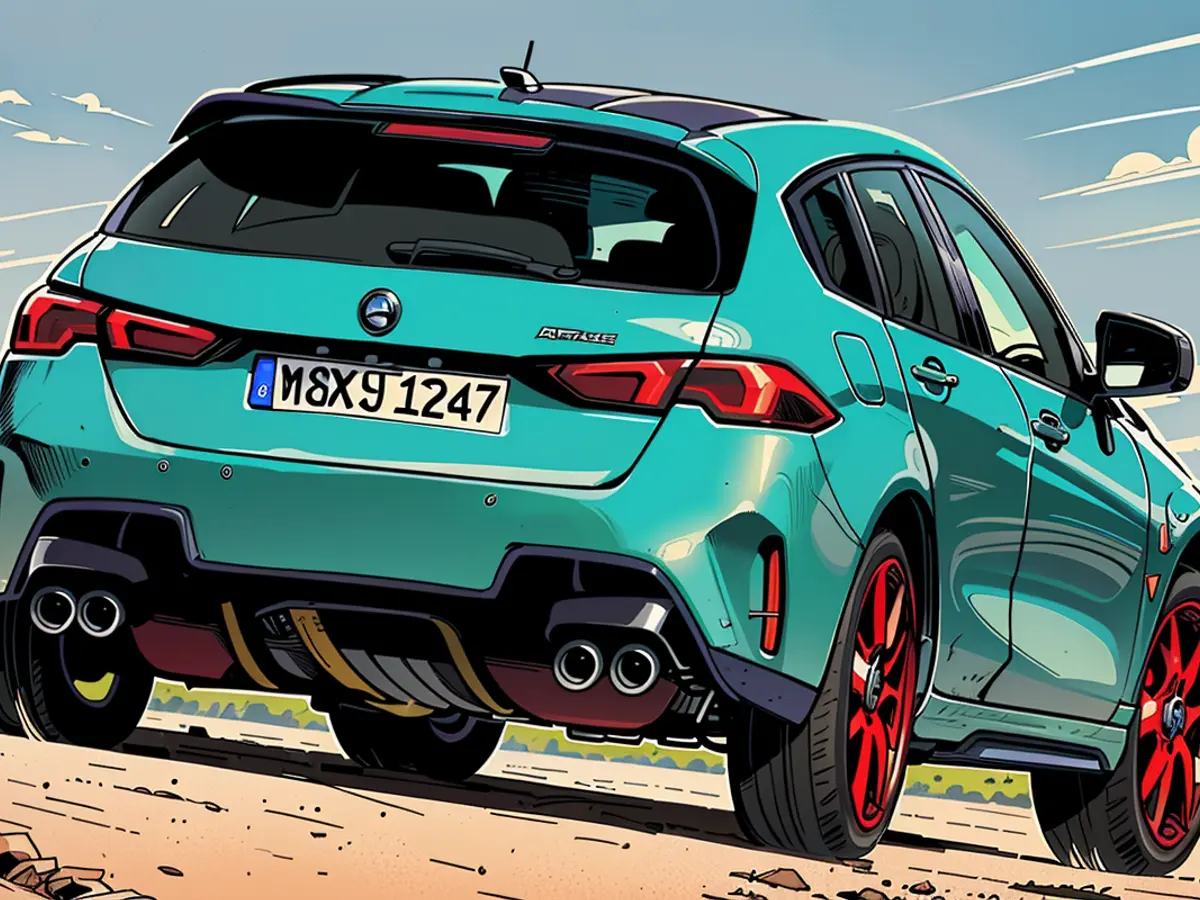Reduced Power Output in BMW 1 Series Yet Maintaining Driving Satisfaction
The second incarnation of the front-wheel drive BMW 1 Series is set to enter the market following a five-year absence. Is this new model series a step forward?
When the first front-wheel drive 1 Series BMW arrived five years ago (the first front-wheel drive BMW was the 2 Series Active Tourer in 2014), opinions from the automotive press were divided. Some critics disapproved of the steering sensitivity and the transition from torque converter automatic to dual-clutch transmission. Others commended the added space. Needless to say, the absence of a driveshaft tunnel and the transverse instead of longitudinal engine mounting saves room, which benefits passengers.
Now, the second generation is prepared to debut, and fans are paying close attention. Upon examining the spec sheet, some skeptical voices are already emerging. Why does the 120 (now sans letter suffix) with a 1500 kg curb weight take around a second longer to hit 100 kph than the previous 120i? The explanation is straightforward - the new version boasts 8 PS less power compared to the previous one. The power comes from 156 horsepower and 20 electric horsepower, with an electric motor in the seven-speed dual-clutch transmission providing an additional 55 Nm. Product management explains away the power reduction by claiming that the 120 is more comparable to the old 118i. An intriguing argument.
120 now signifies three-cylinder

Regardless, the 120 (now labelled "F70") utilizes the B38 three-cylinder engine from the previous 118i. You can hear it on the first stretch - it starts with a core hum instead of a smooth purr, but the loss of power is not immediately noticeable. In everyday use, the nominally slightly lower acceleration is insignificant. What's more surprising is that the boost does not entirely eliminate the slight turbo lag of the high-tech Otto engine. BMW has equipped the 240 Nm petrol engine with direct fuel injection into the combustion chamber or intake manifold for efficiency, and it operates according to the Miller principle with shorter intake valve opening times. This reduces fuel consumption to less than six liters per 100 km in the WLTP cycle.
Those who opt for the significantly more expensive M135 xDrive (56,200 euros instead of 37,900 euros base price) are likely to be more interested in the performance than in fuel economy. The BMW press team also brought this model for testing. The available, noticeably Signal Green-painted top versions with 300 hp (without electrification) can consume up to eight liters of premium gasoline.
In return, the performance indicators suggest that this M Performance model is all about performance. The four-cylinder engine takes off almost without traction problems, reaching 100 kph in 4.9 seconds. In addition to all-wheel drive, the engineers have also fitted this model with a mechanical limited-slip differential at the front axle. And because a complex combustion engine powertrain with delayed torque build-up, for example, compared to an electric motor and numerous gear shifts, may not always respond instantly depending on the driving mode, there's a boost function on the steering wheel paddle, similar to other BMW models. In this case, the passenger is securely fastened into the new seat design when accelerating with full engine load.

The aggressive M135 xDrive
In Sport mode, the 1 Series behaves even more aggressively, accentuating every gear shift of the dual-clutch transmission with a brief misfire from the exhaust. Can this deliberately composed aggressive tone replace the more refined sound of the earlier inline-sixes with rear-wheel drive? Not really. But the agility on a winding country road dispels this concern. You feel connected to the machine while driving the 1.6-tonne M135 xDrive (the "i" is absent here, and will be reserved for electric vehicles in the future).
Numerous improvements in the suspension area are intended to enhance the steering precision of the 1 Series BMW. The body is stiffer, and a strut brace in the engine compartment generates even more rigidity. The top version may turn in more sharply, which could also be due to a slightly altered steering ratio, but one could hardly fault the agile compact sports car for a lack of enjoyment. Additionally, the occupants are pleasantly held securely in the center during spirited cornering thanks to contoured sports seats with Alcantara upholstery.

At the same time, the new 1 Series has grown by around four centimeters in length to 4.36 meters, while retaining the same wheelbase of 2.67 meters. The predecessor was hardly felt to be cramped, but the impression upon entering is quite different: physical buttons have largely disappeared, replaced by the BMW Operating System 7, which takes some getting used to. Whether one can get accustomed to or wants the optional Level 2 driving automation remains to be seen.
The illuminated kidney grille is now standard, serving as a visual boost, especially in twilight conditions. Otherwise, the compact car presents itself in a pleasing and understated manner, avoiding excessive use of creases in the sheet metal. "Keep it simple" seems to be the design motto. The slight notches in the rear lights recall the coupé-like X2 and signal family affiliation. Additionally, the compact car showcases the new BMW style, with the model designation set in the area of the well-designed Hofmeister kink (C-pillar). Nice.
Sure thing, here's your request paraphrased:

To clarify, the 120i isn't the budget option. Another choice is the 116 without the electric boost (122 PS), perfect for those craving performance, retailing at 32,900 euros. Moreover, two diesel options, the 118d and 120d, are available at 38,200 and 40,500 euros respectively. The distinction is the 120d providing an extra 20 electric horses, boosting the system output to 163 PS. A mid-range 123 xDrive (218 PS system output) rounds off the model selection. Making a decision won't be a breeze with this new model, and neither will the driving satisfaction. Give it a spin yourself.
- If you're looking for a more budget-friendly option with a powerful engine, consider the 116 without the electric boost, offering 122 PS and priced at 32,900 euros.
- Motor vehicles enthusiasts might appreciate the range of choices: aside from the 120i, there's the 116, 118d, 120d, and the mid-range 123 xDrive, each offering unique performance and pricing options.








